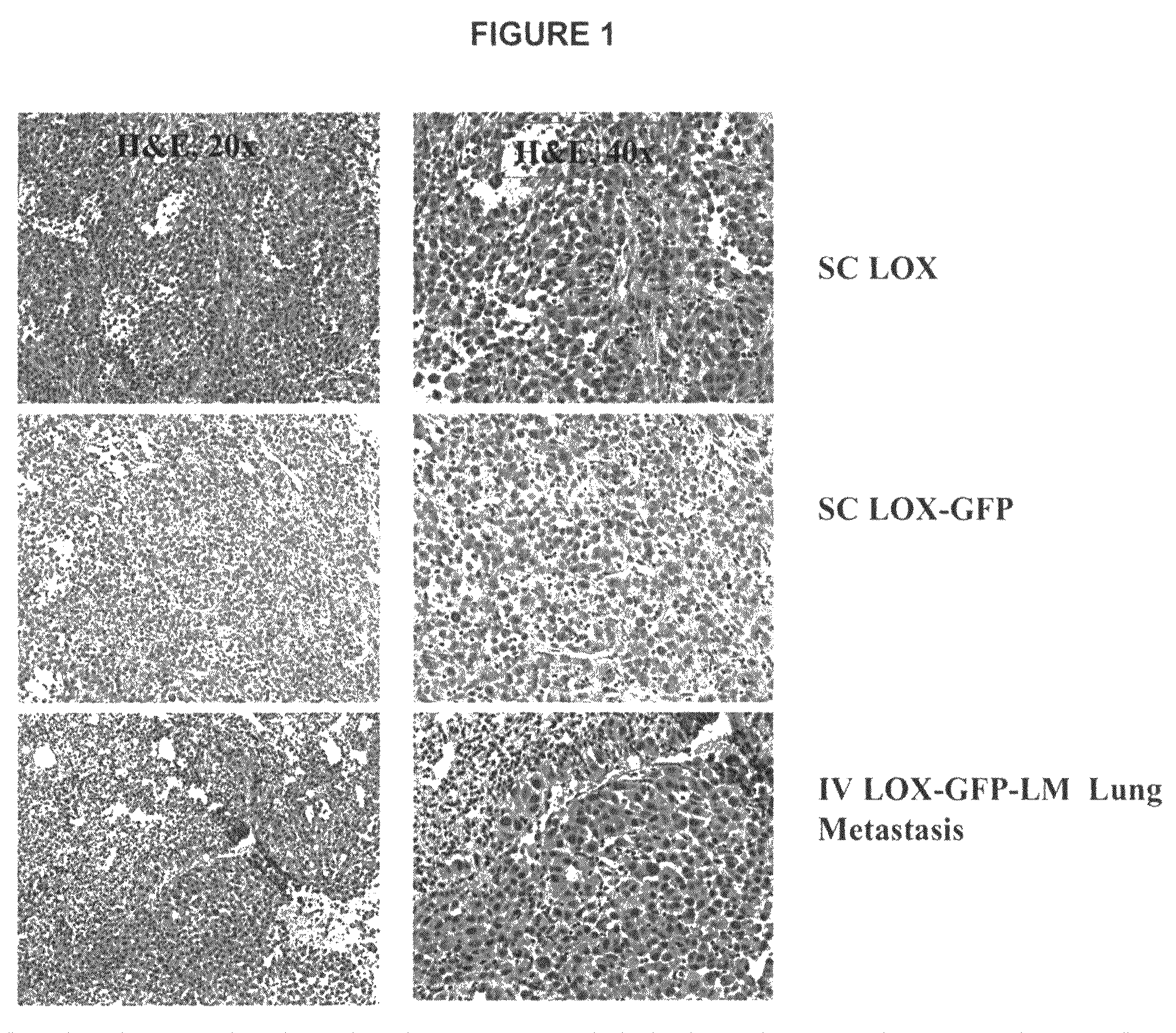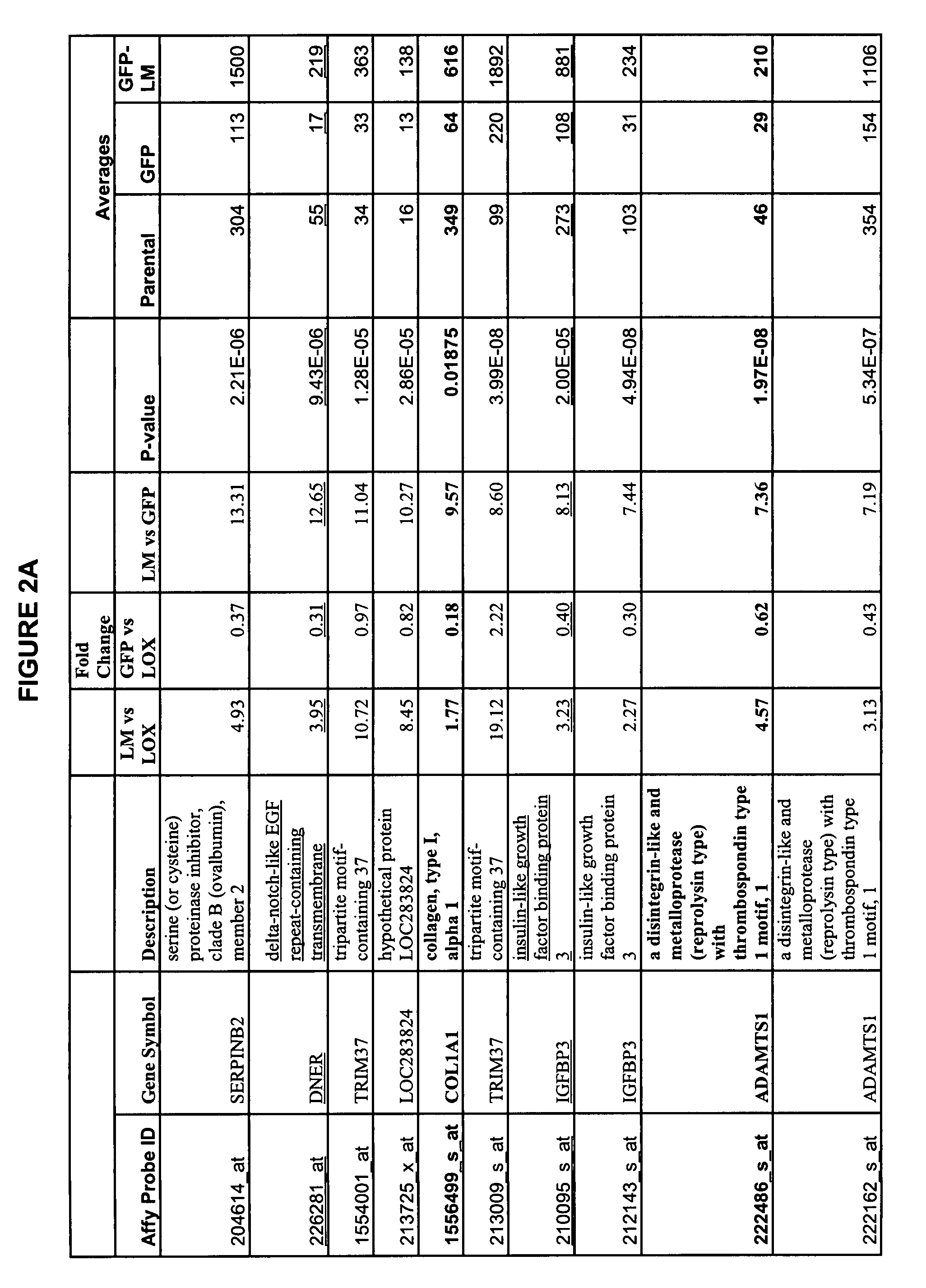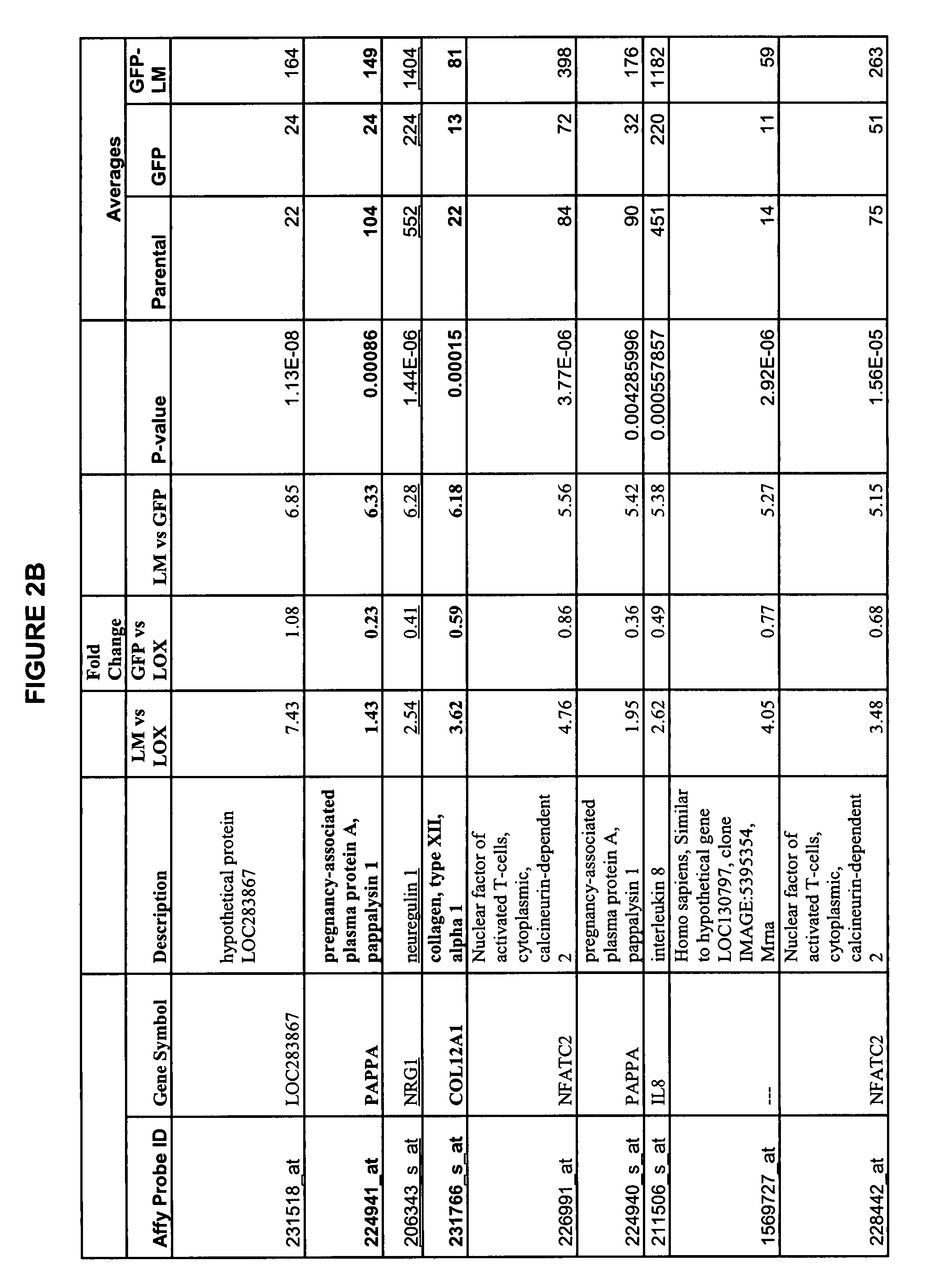Tumor models employing green fluorescent protein
a technology of green fluorescent protein and tumor cells, applied in the field of tumor models employing green fluorescent protein, can solve the problems of quantitative analysis of tumor growth and efficacy, and achieve the effect of enhancing the propensity of tumor cell lines and removing tissue to which metastasis is to be enhanced
- Summary
- Abstract
- Description
- Claims
- Application Information
AI Technical Summary
Benefits of technology
Problems solved by technology
Method used
Image
Examples
example 1
Preparation of Bicistronic GFP Construct
[0058]The bicistronic GFP construct was prepared and provided by Anne Chua and Ueli Gubler, and contained genes for both Renilla mulleri GFP (Prolume Ltd., Pinetop, Ariz.) and the Neomycin phosphotransferase (Neomycin resistant marker) for G418 selection. The sequence of the R. mulleri GFP was engineered into a mammalian expression vector as follows. The vector “pCMV-tag 5A” (Stratagene, Genbank accession number AF076312) was first modified by removing the sequence fragment between the single NotI and BstBI sites. This leaves a plasmid backbone consisting of the ColEl origin of replication, the HSV-TK polyA sequence and the CMV promoter. The deleted fragment was then replaced with a fragment encoding an [IRES-Neomycin phosphotransferase resistance marker]. The IRES-sequence was disabled based on the principle described by e.g. Rees et al, Biotechniques 20:102, 1996, incorporated by reference herein. The disabling fragment was chosen to represe...
example 2
Preparation of Bicistronic GFP Construct
[0059]The sequence of R. mulleri GFP was engineered for stable expression in mammalian cells using a specifically designed modular vector. The construct was prepared and provided by Ann Chua and Ueli Gubler, and contained genes for both Renilla mulleri GFP (Prolume Ltd., Pinetop, Ariz.) and the Neomycin phosphotransferase (Neomycin resistant marker) for G418 selection. The sequence of the R. mulleri GFP was engineered into a mammalian expression vector as follows.
Step 1
[0060]The vector “pCMV-tag 5A” (Stratagene, Genbank accession number AF076312) was first modified by removing the sequence fragment between the single NotI and BstBI sites. This leaves a plasmid backbone consisting of the ColEl origin of replication, the HSV-TK polyA sequence and the CMV promoter.
Step 2
[0061]By overlap-PCR, a module of having the general makeup 5′-AscI-IRES-Neomycin phosphotransferase-BstB1-3′ was generated. Within this module, the IRES-sequence was disabled bas...
example 3
Establishment of LOX-GFP Cells
[0065]Cells from the human melanoma cell line LOX (National Cancer Institute) were cultured in RPMI1640 medium RPMI1640 medium with 10% fetal bovine serum (FBS). All culture medium and related reagents were purchased from Gibco (Invitrogen Corporation, Carlsbad, Calif.). Cells were transfected using Fugene (Roche Molecular Diagnostics) transfecting reagent at a ratio of 3:1 (Fugene:DNA). The bicistronic GFP construct was kindly prepared and provided by Ann Chua and Ueli Gubler in accordance with Example 1. The construct contained genes for both Renilla mullerei (Prolume Ltd., Pinetop, Ariz.) and Neo (Neomycin resistant gene) for G418 selection.
[0066]100 μl of RPMI1640 serum free medium was added to a small sterile tube, and then 9 μl pre-warmed Fugene was added. Finally, 3 μl GFP DNA construct was added to the bottom of the tube, mixed, and incubated at room temperature for 30 min. The entire Fugene / DNA mixture was added to one T-25 fla...
PUM
 Login to View More
Login to View More Abstract
Description
Claims
Application Information
 Login to View More
Login to View More - R&D
- Intellectual Property
- Life Sciences
- Materials
- Tech Scout
- Unparalleled Data Quality
- Higher Quality Content
- 60% Fewer Hallucinations
Browse by: Latest US Patents, China's latest patents, Technical Efficacy Thesaurus, Application Domain, Technology Topic, Popular Technical Reports.
© 2025 PatSnap. All rights reserved.Legal|Privacy policy|Modern Slavery Act Transparency Statement|Sitemap|About US| Contact US: help@patsnap.com



